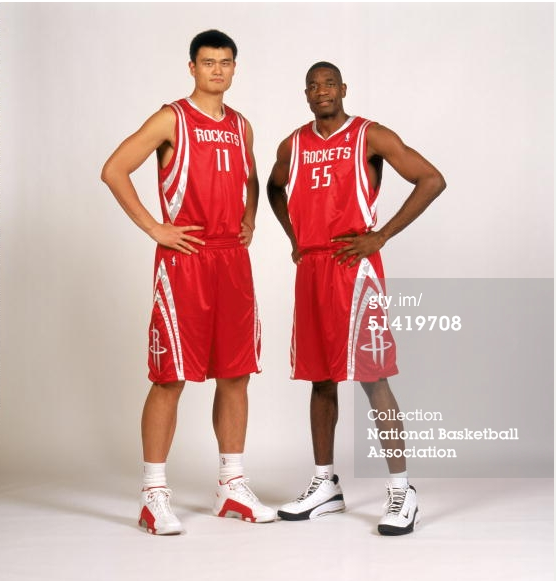Another type of growth factor which I have been noticing being mentioned a lot when looking at the regulation of the growth plate have been a group of growth factors known as Platelet Derived Growth Factor, PDGF. This post will be my attempt in doing at least some basic research on this group of growth regulation proteins. I hope that I will be able to find at least a few from the overall group that do have a critical role in growth plate regulation and chondrocyte proliferation.
First, let’s start with Wikipedia and see what it has to say about Platelet Derived Growth Factors, PDGFs….
In molecular biology, platelet-derived growth factor (PDGF) is one of the numerous growth factors, or proteins that regulate cell growth and division. In particular, it plays a significant role in blood vessel formation (angiogenesis), the growth of blood vessels from already-existing blood vessel tissue. Uncontrolled angiogenesis is a characteristic of cancer.
PDGF is a potent mitogen for cells of mesenchymal origin, including smooth muscle cells and glial cells.
Though it is synthesized stored and released by platelets upon activation, it is produced by a plethora of cells including smooth muscle cells, activated macrophages, and endothelial cells
Function
PDGFs are mitogenic during early developmental stages, driving the proliferation of undifferentiated mesenchyme and some progenitor populations. During later maturation stages, PDGF signalling has been implicated in tissue remodelling and cellular differentiation, and in inductive events involved in patterning and morphogenesis. In addition to driving mesenchymal proliferation, PDGFs have been shown to direct the migration, differentiation and function of a variety of specialised mesenchymal and migratory cell types, both during development and in the adult animal.
PDGF plays a role in embryonic development, cell proliferation, cell migration, and angiogenesis. PDGF has also been linked to several diseases such as atherosclerosis, fibrosis and malignant diseases.
PDGF is also known to maintain proliferation of oligodendrocyte progenitor cells.
Analysis & Interpretation:
From this quick definition found from Wikipedia, I would guess that the PDGFs are a group of proteins that regulate the rate at which many progenitor cells divide. The PDGF is known as a mitogen. From Wikipedia, the term mitogen refers to some external factor or compound that causes a cell to start dividing aka proliferating. If this function was applied to the focus of our research, height increase, we could say that there should be some type of mitogen, probably a PDGF that is also involved in controlling the rate at which the chondrocytes in the growth plate will divide and grow in number. The undifferentiated mesenchyme the definition is talking about can refer to the MSCs we find in the bone marrow of the intermedullary cavity of long bones.
However it seems that the PDGFs seem to work mainly on smooth muscle cells, glial cells, and oligodendrocyte progenitor cells (or a type of brain cell). What may be the most important thing to take out of this article is that the PDGFs are involved in the formation of blood vessels aka angiogenesis.
For the purposes of our desire to increase height, previous research has shown that having blood vessel disruption in the metaphyseal area of long bones may actually increase longtitudinal growth. It is important to realize that a long bone in a human body has blood vessels going in various parts of the long bone, to the ends of the bone, the epiphysis, to the middle, and to the growth plates as well.
Let’s not forget that the growth plates are cartilage, and cartilage intrinsically does not have any blood vessels going through the extracellular matric of the cartilage. The cartilage is both protected from angiogenesis and vascularization by the perichondrium (in the articular and epiphyseal cartilage) as well as angiogenesis inhibitor factors like Chondromodulin. Any “food” that the chondrocytes in the epiphyseal cartilage does get must be diffused through the matrix to it. As it should happen, when the growth plates starts getting punctured in the walls by the blood vessels, that is when the rate at which ossification and calcification of the cartilage become increased beyond the limit at which the cartilage can possibly regenerate more chondrocytes which form cartilage from the resting zone.
If we now look at the Wikipedia article on Platelet Derived Growth Factor Receptor…
Platelet-derived growth factor receptors (PDGF-R) are cell surface tyrosine kinase receptors for members of the platelet-derived growth factor (PDGF) family. PDGF subunits -A and -B are important factors regulating cell proliferation, cellular differentiation, cell growth, development and many diseases including cancer. There are two forms of the PDGF-R, alpha and beta each encoded by a different gene. Depending on which growth factor is bound, PDGF-R homo- or heterodimerizes.
Interaction with signal transduction molecules
Tyrosine phosphorylation sites in growth factor receptors serve two major purposes: to control the state of activity of the kinase and to create binding sites for downstream signal transduction molecules, which in many cases also are substrates for the kinase.
Analysis & Interpretation:
We are seeing that the PDGF receptors are just like so many other receptors we have been studying and research before. They are also tyrosine kinase, which we had studied when we looked at the Wnt/Beta-Catenin Signaling pathway and the PI3K/AKT/mTOR signaling pathway. The PDGFs are just another type of growth factor then that “moves” in the extracellular fluid to eventually bind with the receptors it has on the outer cellular membrane which it would cause a cascading signal pathway. However, this type of knowledge does not tell us how exactly do this type of growth factor affect and relate to growth and overal human height.
Thus, we need to turn to studies which we might be able to find from PubMed. The first study I will turn to is “Platelet derived growth factor stimulates chondrocyte proliferation but prevents endochondral maturation.”
Endocrine. 1997 Jun;6(3):257-64.
Platelet derived growth factor stimulates chondrocyte proliferation but prevents endochondral maturation.
Kieswetter K, Schwartz Z, Alderete M, Dean DD, Boyan BD.
Source
OsteoBiologics, Inc., San Antonio, TX, USA.
Abstract
Platelet-derived growth factor (PDGF) is a cytokine released by platelets at sites of injury to promote mesenchymal cell proliferation. Since many bone wounds heal by endochondral bone formation, we examined the response of chondrocytes in the endochondral lineage to PDGF. Confluent cultures of rat costochondral resting zone cartilage cells were incubated with 0-300 ng/mL PDGF-BB for 24 h to determine whether dose-dependent changes in cell proliferation (cell number and [3H]-thymidine incorporation), alkaline phosphatase specific activity, [35S]-sulfate incorporation, or [3H]-proline incorporation into collagenase-digestible protein (CDP) or noncollagenase-digestible protein (NCP), could be observed. Long-term effects of PDGF were assessed in confluent cultures treated for 1, 2, 4, 6, 8, or 10 d with 37.5 or 150 ng/mL PDGF-BB. To determine whether PDGF-BB could induce resting zone chondrocytes to change maturation state to a growth zone chondrocyte phenotype, confluent resting zone cell cultures were treated for 1, 2, 3, or 5 d with 37.5 or 150 ng/ml PDGF-BB and then challenged for an additional 24 h with 1,25-(OH)2D3. PDGF-BB caused a dose-dependent increase in cell number and [3H]-thymidine incorporation at 24 h. The proliferative effect of the cytokine decreased with time. PDGF-BB had no effect on alkaline phosphatase at 24 h, but at later times, the cytokine prevented the normal increase in enzyme activity seen in post-confluent cultures. This effect was primarily on the cells and not on the matrix. PDGF-BB stimulated [35S]-sulfate incorporation at all times examined, but had no effect on [3H]-proline incorporation into either the CDP or NCP pools. Thus, percent collagen production was not changed. Treatment of the cells for up to 5 d with PDGF-BB failed to elicit a 1,25-(OH)2D3 responsive phenotype typical of rat costochondral growth zone cartilage cells. These results show that committed chondrocytes can respond to PDGF-BB with increased proliferation. The effect of the cytokine is to enhance cartilage matrix production, but at the same time to prevent progression of the cells along the endochondral maturation pathway.
PMID: 936868[PubMed – indexed for MEDLINE]
Analysis & Interpretation:
From Wikipedia…
Cytokines are small cell-signaling protein molecules that are secreted by numerous cells and are a category of signaling molecules used extensively in intercellular communication. Cytokines can be classified as proteins, peptides, or glycoproteins; the term “cytokine” encompasses a large and diverse family of regulators produced throughout the body by cells of diverse embryological origin. The term “cytokine” has been used to refer to the immuno modulating agents, such as interleukins and interferons. Biochemists disagree as to which molecules should be termed cytokines and which hormones.
Platelets, or thrombocytes are small, irregularly shaped clear cell fragments (i.e. cells that do not have a nucleus) which are derived from fragmentation of precursor megakaryocytes. The average lifespan of a platelet is normally just 5 to 9 days. Platelets are a natural source of growth factors.
We learn that many wounds, which I would guess represent both skin lacerations and bone fractures, when going through the process of healing have these platelets which release the PDGF, also known as a cytokine. The researchers would take resting zone chondrocytes from the costochondral region and have them cultured and have a specific type of PDGF called PDGF-BB added to see whether the cultures will show proliferation, increased collagen production, alkaline phosphatase activity, thymidine incorporation, or sulfate or proline incorporation. The results showed that with the PDGF-BB it seems that the initial injections did show the resting zone chondrocytes proliferate (ie. grow in number and show thymidine incorporation) but the effects over time of the PDGF decreased in effectiveness.
From 2nd PubMed study…
[Degree of differentiation of chondrocytes and their pretreatment with platelet-derived-growth factor. Regulating induction of cartilage formation in resorbable tissue carriers in vivo].
Orthopade. 2000 Feb;29(2):120-8.
[Article in German]
Lohmann CH, Schwartz Z, Niederauer GG, Boyan BD.
Source
Department of Orthopaedics, University of Texas Health Science Center, San Antonio, USA. LohmannCH@t-online.de
Abstract
Current methods for articular cartilage repair are unpredictable with respect to clinical success. In the present study, we investigated the ability of cells from articular cartilage, perichondrium, and costochondral resting zone to form new cartilage when loaded onto biodegradable scaffolds and implanted into calf muscle pouches of nu/nu mice. Prior in vitro studies showed that platelet derived growth factor-BB (PDGF-BB), but not transforming growth factor beta-1 (TGF-beta 1), basic fibroblast growth factor, or bone morphogenetic protein-2 promoted proliferation and extracellular matrix sulfation of resting zone chondrocytes without causing the cells to exhibit a hypertrophic chondrocyte phenotype. TGF-beta 1 has also been shown to stimulate chondrogenesis by multipotent chondroprogenitor cells like those in the perichondrium. In addition, PDGF-BB has been shown to modulate chondrogensis by resting zone cells implanted in poly(D,L-lactide-co-glycolide) (PLG) scaffolds. In the present study we examined whether the cartilage formation is dependent on state of chondrocyte maturation and whether the pretreatment of chondrocytes with growth factors has an influence on the cartilage formation. Scaffolds were manufactured from 80% PLG with a 75:25 lactide:glycolide ratio and 20% modified PLG with a 50:50 lactide:glycolide ratio (PLG-H scaffolds). For each experimental group, four nude mice received two identical implants, one in each calf muscle resulting in an N = 8 implants: PLG-H scaffolds alone; PLG-H scaffolds with cells derived from either the femoral articular cartilage, costochondral periochondrium, or costochondral resting zone cartilage of 125 g male Sprague-Dawley rats; PLG-H scaffolds with either articular chondrocytes or resting zone chondrocytes that were pretreated with 37.5 ng/ml rhPDGF-BB for 4 h or 24 h before implantation, or with perichondrial cells treated with PDGF-BB plus 0.22 ng/ml rhTGF beta-1 for 4 h and 24 h. At 4 or 8 weeks after implantation, samples were harvested and analyzed histomorphometrically for new cartilage formed, area of residual implant and area of fibrous connective tissue. Only resting zone cells showed the ability to form new cartilage at a heterotopic site in this study. There was no neocartilage found in nude mice with implants loaded with either articular chondrocytes or perichondrial cells. Pretreatment of resting zone chondrocytes for 4 h prior to implantation significantly increased the amount of newly formed cartilage after 8 weeks and suppressed chondrocyte hypertrophy. The amount of fibrous connective tissue around implants containing either articular chondrocytes or perichondrial cells decreased with time, whereas the amount of fibrous connective tissue around implants containing resting zone chondrocytes pretreated with PDGF-BB was increased. The results showed that resting zone cells can be successfully incorporated into biodegradable porous PLG scaffolds and can induce new cartilage formation in a nonweight-bearing site. Articular chondrocytes as well as perichondrial cells did not have the capacity for neochondrogenesis when implanted heterotopically in this model.
PMID: 10743633 [PubMed – indexed for MEDLINE]
Analysis & Interpretation:
The researchers wanted to see whether adding a certain type of growth factor into the chondrocytes which was extracted from perichondrium, resting zones, and articular cartilage and then imbedded into scafolds would result in better/ greater cartilage formation. From old results seen from other experiments on the effects of all the most well known growth factors, the TGF-Betas, the BMP-2, the bFGFs, and the PDGFs, the PDGFs seemed to be the group which could get the chondrocytes to proliferate and increase extracellular matrix sulfation without getting the chondrocytes to take the direction of mutaration into hypertrophy. The study was also going to see whether the state of the maturation of the cartilage in the scaffold would also be modulating the cartilage formation rate.
The idea was to take the PGL derived scaffold with chondrocytes embedded into them and implant the scaffold into the limbs of test animals with a growth factor treatment to see whether the growth factor which the scaffold was pretreated with will help in making new cartilage formationBesides using the PDGF-BB as the growth factor, TGF-Beta was also using as a comparison growth factor, as well as combining the two growth factors together. The results reveal that the only type of chondrocytes which showed cartilage formation were from the resting zone. The implants into the mice which were from the articular cartilage or the perichondrium showed no cartilage formation after the implantation of the scaffold/chondrocyte mix. .
Study #3: Formation of repaired hyaline cartilage using PDGF-treated chondrocyte/PCL construct in rabbit knee articular cartilage defect
From the Abstract…
Platelet derived growth factor (PDGF) has a positive mitogenic and chemotactic effect on mesenchyme derived cells, and its receptor has been identified also on chondrocytes [16]. The main reason for the usage of PDGF as a promoting factor for cartilage repair comes from the healing response in cartilage defects treated with microfracture. In this method, the formed clot in the defect site can provide an environment enriched with growth factors such as PDGF, exerting chemotactic and mitogenic effects [17]. PDGF has a direct effect on chondrocytes proliferation, differentiation and cartilage proteoglycan production and is thus believed to be able of enhancing tissue regeneration and repair [15, 16].
Although there are differences between human and animal tissues, for examining a novel treatment, a suitable animal model can be used as an important tool in enhancement of regenerative medicine. Furthermore, histological assessment of human articular cartilage after ACT is limited because biopsy for obtaining specimen may result in joint injury. In this study, we used rabbit which is a widely used animal model in study of tissue regeneration. Regarding the importance of PDGF as promoting factor for cartilage healing, we designed this study to evaluate whether PDGF is able to stimulate transplanted constructs for producing a hyaline-like repaired tissue instead of fibrocartilage one and enhance the integration of chondrocyte/PCL complex implanted in the damaged knee articular cartilage in rabbits.
Analysis & Interpretation:
It would seem that besides the many receptors found on the surface of chondrocytes, the receptor for the Platelet derived growth factor is also on it. It seems that cartilage defects from microfractures show really good results when treated with the PDGF. The interesting thing is that the abstract states explictly that the PDGF has a direct effect on chondrocyte proliferation, differentiation, and proteoglycan production. The most interesting thing that the PDGF has an effect on is that if one uses this type of growth factor on cartilage defects, the cartilage that it can produce is of the hyaline cartilage variety, not he fibrocartilage one would find. As always, the chondrocyte with the PCL scaffold matrix is used for embedding into the damaged region of cartilage in test animals/rabbits.




